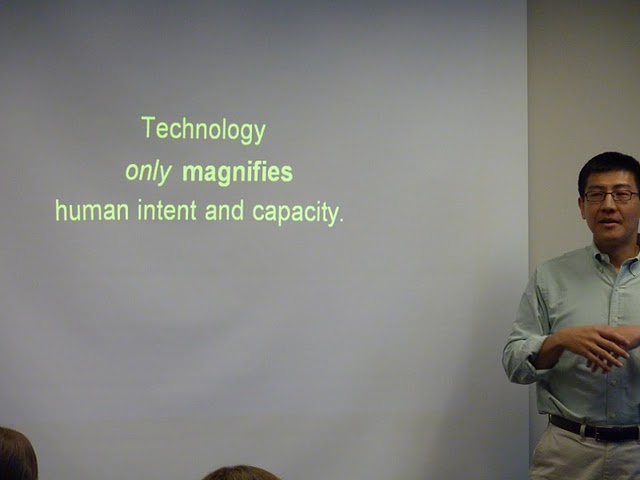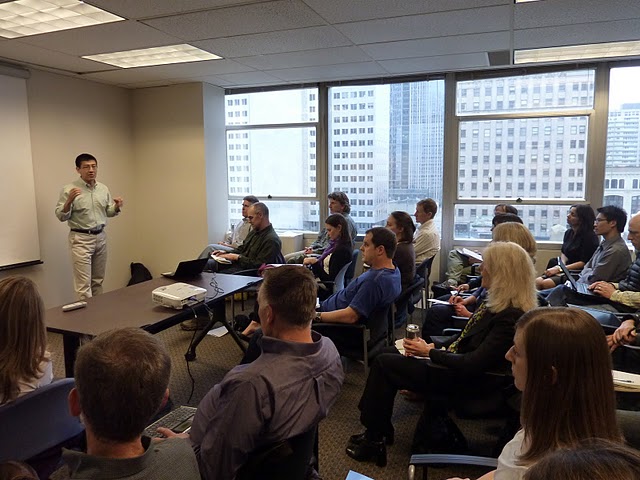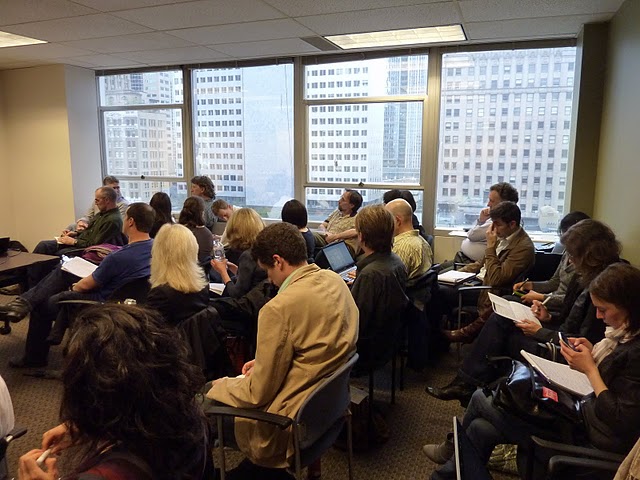Posted on May 16, 2011
By Sam Daley-Harris
The deed is done. On May 5th the appellate division of the Bangladesh Supreme Court agreed that the Bangladesh Bank, the nation’s central bank, was justified in firing Nobel Peace Prize Laureate Muhammad Yunus from his post as Managing Director of Grameen Bank, the institution he founded more than three decades ago. Prof. Yunus’ lead lawyer, Dr. Kamal Hossain, one of Bangladesh’s most distinguished attorneys and a drafter of the nation’s constitution, was scarcely able to hide his disgust at the Appellate Division order, when he said: “I [apparently] have to take admission to university again to newly learn the constitutional laws of the 21st century.”
The dismissal is not the lone action of one government institution but is part of a premeditated campaign that starts at the highest level with Prime Minister Sheikh Hasina. Their reason for sacking Prof. Yunus? He’s “too old.” Never mind that the 70-year-old Yunus maintains a rigorous schedule or that the Finance Minister, another key player in the sacking, at 77 is somehow not “too old” for that post. Their excuse would be laughable if it were not for the calamitous impact it portends. What makes the decision to remove Prof. Yunus so disgraceful is not that he would be out of a job – any university in the world would welcome him with open arms as a visiting professor. No, the atrocity here is the fact that the independence and integrity of one of the world’s premier poverty fighting institutions is now at grave risk. Grameen Bank, an extraordinary institution with more than 8 million microcredit borrowers that took 35 years to build, could be destroyed in a matter of months by incompetent government action.
The government’s action cannot honestly be in response to accusations by a Danish documentary maker about an improper transfer of Norwegian aid funds more than a dozen years ago, because both the Norwegian government and Bangladesh’s own review committee have found that Grameen did nothing wrong. It cannot be due to the documentary maker’s charge of excessive interest rates, because Microfinance Transparency and the government’s own review committee found Grameen has the lowest interest rates in the country. Instead, most observers see this as an inexcusable political vendetta by the Prime Minister against Prof. Yunus, stemming from his short-lived attempt to start a political party in 2007.
Consider these groundbreaking innovations that Prof. Yunus’ poverty-fighting laboratory has brought to the world and what could be lost in the future from his unwarranted ouster:
- In 1976 he made loans of less than US$1 each to 42 desperately poor Bangladeshis to start or build tiny businesses – and the microcredit revolution was born. It has made its way all around the world. While others have seen microfinance as a way to make big money for investors, Prof. Yunus has never once diverted from his original intent to empower the poor.
- In 1997 Grameen Phone Ladies started bringing cell phone technology to remote villagers throughout Bangladesh—providing the dual benefit of creating jobs and increasing communications, which enhanced others’ work.
- Grameen Shakti, an energy firm, has installed more than a half-million solar home systems and sold more than a quarter-million improved cooking stoves.
- In a joint venture with Danone, the yogurt maker headquartered in France, Grameen Danone is bringing low-cost fortified yogurt to malnourished children throughout the country – and creating a business opportunity for the poor women who sell it.
- College scholarships and loans have gone to 180,000 students. Most remarkably, in almost all of the cases, these are the children of illiterate parents who have had the help of Grameen Bank in breaking the bonds of intergenerational illiteracy.
A government that so rashly and ruthlessly ousts this innovative and transformational leader cannot likely be trusted to continue his revolutionary work.
But the deed is done. Here is a sample of the visionary voice that Bangladesh has likely lost in this despicable government act. Reflecting on the 1997 Microcredit Summit Prof. Yunus wrote: “In teaching economics I learned about money, and now as head of a bank I lend money. The success of our venture lies in how many crumpled bank bills our once starving members now have in their hands. But the microcredit movement, which is built around, and for, and with money, ironically, is at its heart, at its deepest root not about money at all. It is about helping each person to achieve his or her fullest potential. It is not about cash capital, it is about human capital. Money is merely a tool that unlocks human dreams and helps even the poorest and most unfortunate people on this planet achieve dignity, respect, and meaning in their lives.”
Sam Daley-Harris is Founder of the Microcredit Summit Campaign which seeks to reach 175 million poorest families with microloans www.microcreditsummit.org and of RESULTS which seeks to create the political will to end poverty www.results.org.
Posted on May 12, 2011
On Monday over seventy five people gathered at St. Mark’s Cathedral to hear an expert panel speak about the global implications of India’s micro-credit crisis. Among the panelists were David Roodman, a senior fellow at The Center for Global Development Rick Beckett, president and CEO of Global Partnerships, Chris Wolff, senior director at accion international and Peter Bladin, executive vice president at the Grameen Foundation. Prior to the event, Global Washington members working in micro-finance gathered for a private round table discussion to examine what their organizations could learn from this crisis.
The event kicked off with a fifteen-minute crash coursegiven by David about what had happened to cause the micro-finance crisis in the India. He explained, that the region of Andhra Pradesh had been experiencing a very high rate of growth in micro-finance for the past twenty years or so. Among micro-finance providers was Sks, a large MFI that went public at the end of last summer. The organization was founded by Vikram Akula, whom was previously valued at an astounding 90 million dollars. These big numbers hit the papers and showed how much money was being made off of the backs of the poor, which created some negative back lash towards micro-finance.
Roodman said: “there were many causes from global warming to political parties but I do think the main problem was fast growth, credit just became too easy.” He went onto say: “should we blame profiteering for what happened in India? My answer is no” In addition to high growth, Roodman seemed to think investors needed to take more accountability for the bubbles that were being created by this oversees capital.
Roodman explained three main notions that surround micro-finance. Firstly, he expressed the idea of micro-finance as helping people escape poverty. When describing this notion he boldly stated “we don’t have evidence it reduces poverty.” The second notion he described was micro-finance as freedom. Here, Roodman brought up several fantastic examples from the book: Portfolios of the Poor which he used to make the point that “poor people don’t have perfect financial services,” such as health insurance. Therefore micro-finance can be one more tool that helps the poor in the times that they are not able to cover their expenses. The final point he made was the idea of micro-finance as industry building. Here he gave the famous example of the Grameen Bank, which has created thousands of jobs and improved the industry in Bangladesh. From this overview, the discussion was then opened up to the panel of people that represented micro-finance practitioners to see what their interpretation of Roodman’s thoughts were.
Beckett embellished on Roodman’s point about the bubble saying: “it is not only the amount of capital, it is the nature of the capital” that we need to pay attention to when looking at investments in micro-finance. While Wolff highlighted that we need to use this event in India as a learning experience, he said we must all ask the question:” How can we use this situation to be better, to be more client focused?” Bladin hinted that profit may have played a role in the problems in India when he said: “you’ve got to have the double bottom line and measure how you are reaching the people there.” Ultimately, while most panellists seemed to agree with Roodman’s points, there was a lot of discussion about how to further expand these lessons all the way from India to the MFIs operating in Seattle.
One of the few points of contention seemed to be whether micro-finance had truly made an impact or not. While Beckett acknowledged that micro-finance may not be perfect, he said: “One of the great challenges in global development is there are very few ways of reaching 100’s of thousands of people. Micro-finance does this so it has the ability to serve as a sustainable channel for other things…. There just aren’t that many things that do that.” Others brought up the point that while there was no evidence that micro-finance was actually pulling people out of poverty; there was also not evidence to the contrary. Overall there seemed to be a consensus that regardless of the result of these studies, micro-finance had succeeded in making poverty more liveable, so this form of development is at least providing a short-term solution. “There is a piece of this that is important for us to own, that MF got romanticised…and we fell in love with it” said Beckett. Everyone seemed to agree that recent events in India were an opportunity to see some grounding realities in the world of micro-finance, but not to fall out of love with the field entirely.
To read more about the event please visit the KPLU Humanosphere recent posting.
Posted on May 11, 2011
“Kids in the developing world need the newest technology…”[1]
“Can the cellphone help end global poverty?”[2]
 Amidst such buzz around technology’s role in global poverty and human rights, Kentaro Toyama provided a poignant presentation on the myths of technology in international development to Global Washington members on Friday, May 6, 2011. Following the presentation was a lively discussion between Toyama and the audience, comprised primarily of Global Washington members with theoretical and field expertise in this area.
Amidst such buzz around technology’s role in global poverty and human rights, Kentaro Toyama provided a poignant presentation on the myths of technology in international development to Global Washington members on Friday, May 6, 2011. Following the presentation was a lively discussion between Toyama and the audience, comprised primarily of Global Washington members with theoretical and field expertise in this area.
A visiting scholar at UC Berkeley and former co-founder of Microsoft Research India, where he designed electronic technology for international development, Toyama intimately understands technology’s role in supporting poverty alleviation work. Throughout the presentation, he stressed that “technology magnifies intent and capacity” and cautions against looking to technology, in and of itself, as a solution to global poverty.
Toyama’s presentation focused on countering seven myths regarding technology in international development.
Myth #1: Technology undoes the rich getting richer.
Toyama began with a question to the audience that went something like, “you and a poor Ugandan rural farmer are each given an e-mail account and asked to raise as much money for the charity of your choice. Who would be able to raise more money?” The room indicated that they would be able to raise more funds due to various reasons, from the relative affluence of their friends to their computer literacy skills to their education in articulating written concepts. And thus began Toyama’s presentation, highlighting that even with identical technology, other capacities and systems have to be addressed to gain equality.
Myth #2: Hardware and software are a one-time cost
Toyama reminded Global Washington members that the average American mid-size corporation spends approximately $7,000 per year on their IT budget. Thus, hardware and software are NOT a one-time cost. In contrast, there is a need to continue to invest in technology.
Myth #3: Needs translate to business models
Using the fact that Google does not make a profit from YouTube and Google Maps – services that we might consider quite useful in our lives – Toyama illustrated that people don’t always pay for needs.
Myth #4: Automated is cheaper and better
Toyama highlights problems with full automation, particularly in the developing world: cost, literacy, lack of technological familiarity and errors within technology.
Myth #5: Information is the bottleneck
In the developed world, and even more so in the developing world, time, effort, basic needs and a host of other priorities get in the way of obtaining all of the information that’s available. For example, just because a person has access to the Internet, and thus educational resources, does not mean that person can and will obtain a full education.
Myth #6: Technology’s impact is only positive
Because “technology magnifies positive and negative intent,” technology may have positive as well as negative effects. For example, technology can easily further the negative effects of gender inequality, abuse and child prostitution.
Myth #7: Technology X will save the world
Contrary to popular belief at the time of their invention, radio, TV, landline telephones and PCs have yet to save the world. In fact, in places where we would most desire to see technology make positive change, we don’t see this change because other key systems are missing: physical, social, financial and digital infrastructure.
So, how do we use technology successfully in global development work?
Toyama offered recommendations for successful use of technology, which include:
- Apply technology to existing social trends or institutions, which are already making an impact.
- Focus on nurturing human “intent and capacity.”
- The human component to any technology is critical.
 Global Washington members dug deeper asking about and commenting on their work in community readiness for technology, successes and failures in technology, public-private partnership models and the role of education.
Global Washington members dug deeper asking about and commenting on their work in community readiness for technology, successes and failures in technology, public-private partnership models and the role of education.
Global Washington’s mission is to convene, advocate, and strengthen the international development sector in Washington State, with an emphasis on the sectors of Global Health, Global Education, Environmental Sustainability, and Poverty Alleviation. In this role, Global Washington brings together its members and the community to discuss critical global topics. Consider two upcoming events focused on technology and global development: Mobiles in Development on June 16 and the Dark Side of ICCT on July 14.
by Bridgette Greenhaw
[1] Negoponte, N. (2005). About the Project: Frequently Asked Questions. Retrieved May 9, 2011, from One Laptop Per Child: http://one.laptop.org/about/faq
[2] Corbett, S. (2008, April 13). Can the Cellphone Help End Global Poverty? . The New York Times.
 Amidst such buzz around technology’s role in global poverty and human rights, Kentaro Toyama provided a poignant presentation on the myths of technology in international development to Global Washington members on Friday, May 6, 2011. Following the presentation was a lively discussion between Toyama and the audience, comprised primarily of Global Washington members with theoretical and field expertise in this area.
Amidst such buzz around technology’s role in global poverty and human rights, Kentaro Toyama provided a poignant presentation on the myths of technology in international development to Global Washington members on Friday, May 6, 2011. Following the presentation was a lively discussion between Toyama and the audience, comprised primarily of Global Washington members with theoretical and field expertise in this area.
 Global Washington members dug deeper asking about and commenting on their work in community readiness for technology, successes and failures in technology, public-private partnership models and the role of education.
Global Washington members dug deeper asking about and commenting on their work in community readiness for technology, successes and failures in technology, public-private partnership models and the role of education.